On April 9, 2025, Ethereum (ETH) price broke below the $1,400 mark, hitting a new low since October 2023. This "halving-style" crash from the $2,800 high not only pierced investors' psychological defense line but also exposed the deep crisis in the Ethereum ecosystem. As the "secondary core asset" in the cryptocurrency market, ETH's weak performance stands in stark contrast to Bitcoin's resilience, resulting from a resonance of multiple factors including macroeconomic conditions, market structure, and ecosystem competition. This article will deconstruct the core logic behind Ethereum's price plunge from three dimensions: on-chain data, institutional behavior, and ecosystem landscape.
I. On-chain Indicators Warning: Realized Price Breach Triggers "Surrender Spiral"
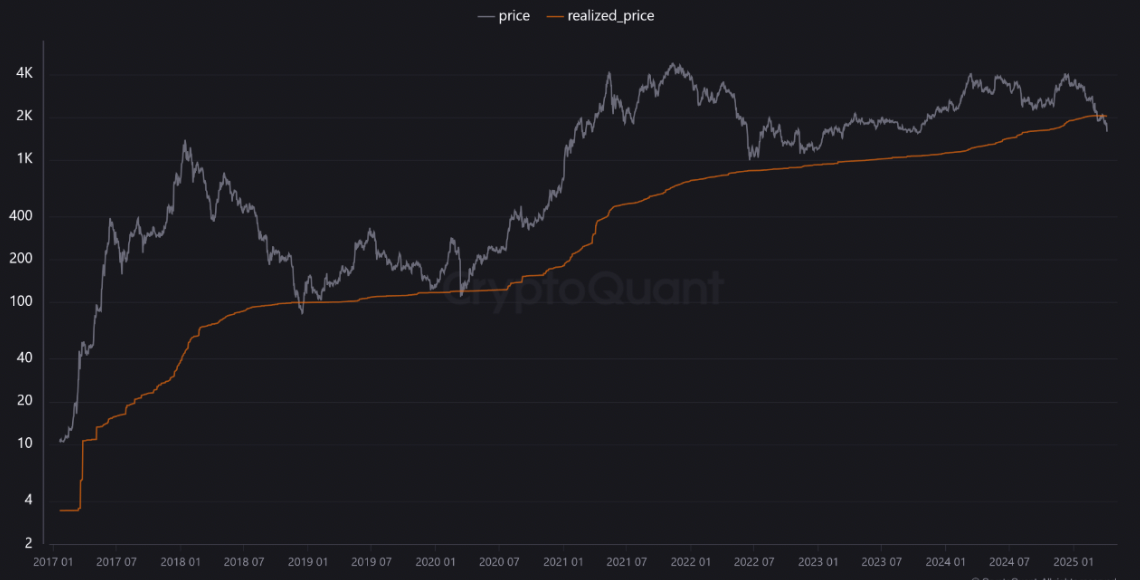
Ethereum's crash was not without warning, as on-chain data had long issued a strong alert. According to research by CryptoQuant analyst theKriptolik, ETH spot price breaking below the "Realized Price" is a landmark signal of market entering the "surrender stage". This indicator calculates the average cost of the last on-chain transfer for all ETH, reflecting holders' real profit and loss status. When spot price falls below realized price, it means most token holders are in floating losses, and panic selling pressure suddenly increases.
(1) History Repeats: "Mirror" of 2022 Crash
Ethereum has twice triggered massive sell-offs by breaking the realized price:
- June 2022: After Terra Luna's collapse, ETH price plummeted 51%, with realized price support failing, leading to a six-month downward cycle;
- November 2022: FTX's bankruptcy triggered a liquidity crisis, with ETH again breaking the realized price, dropping 35%.
The current scenario is highly similar to historical patterns. Since March 2025, Ethereum price has continuously remained below the realized price (around $1,500), causing on-chain chip structure to deteriorate.
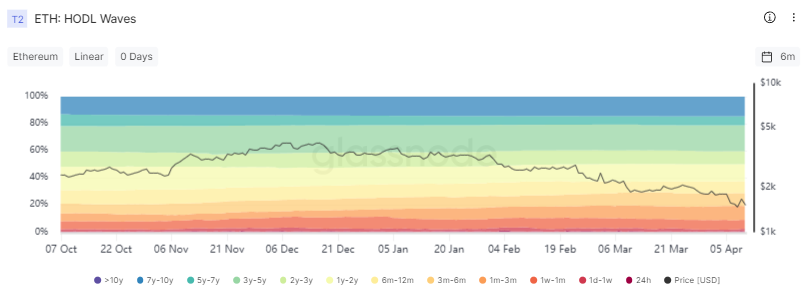
Glassnode data shows the proportion of "diamond hand" addresses holding ETH for over a year has sharply dropped from 63% to 55%, while short-term holders' (holding <1 month) selling volume surged by 47%. This "multi-kill" trampling effect directly pushed ETH price from $2,800 to $1,400.
(2) Staking Risk: "Death Spiral" Under High Leverage

Ethereum's staking mechanism exacerbated the liquidity crisis. As of April 2025, ETH staking rate reached 27.85%, but annual staking yield is only 3.12%, far lower than competitors like Solana (5.2%). When price drops below stakers' cost line, some validators are forced to sell to avoid liquidation, forming an on-chain "death spiral". For example, a whale on Hyperliquid platform short-selling ETH with 50x leverage triggered liquidation of 160,000 ETH (worth $306 million), directly causing a 14% single-day price drop.
II. Institutional Withdrawal: ETF Bleeding and Derivatives Market Short Squeeze
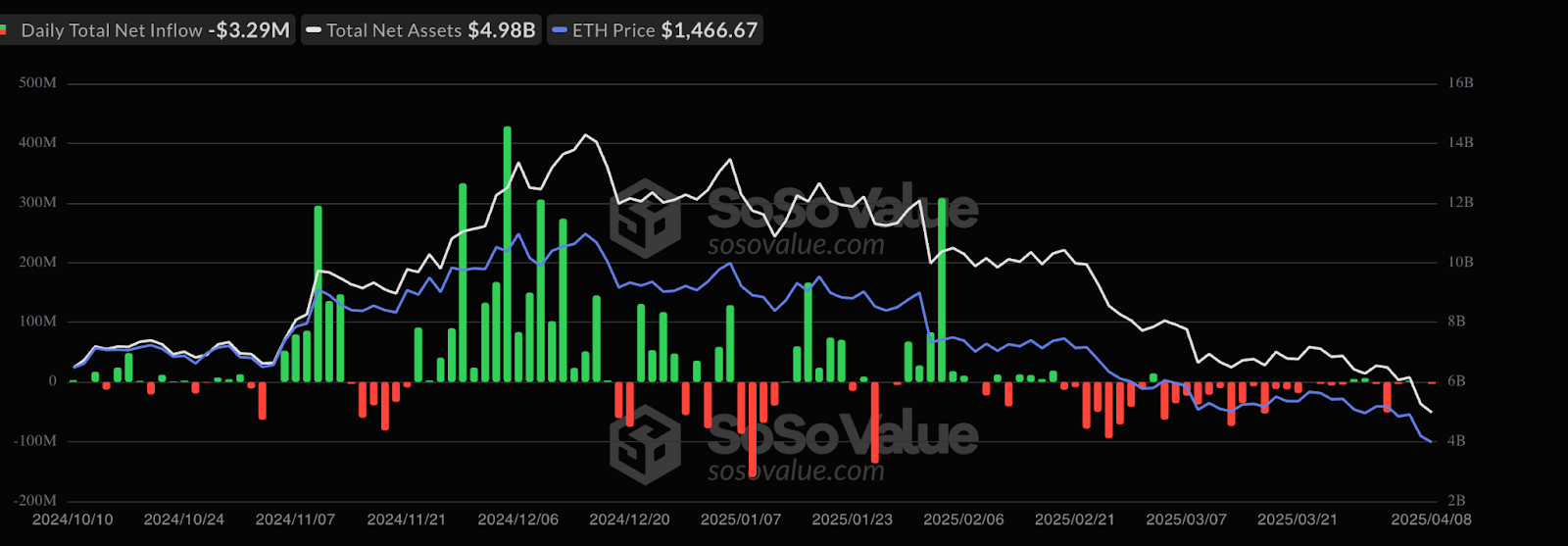
Continuous institutional capital withdrawal is the direct driver of Ethereum's price crash. Unlike Bitcoin ETF's resilience, Ethereum spot ETF has seen net outflows of $2.4 billion since 2025, with $3.3 million outflow on April 8th alone. This collapse of "institutional belief" exposes ETH's structural deficiencies as a "secondary core asset".
(1) ETF Dilemma: Staking Predicament and Regulatory Uncertainty
Ethereum ETF faces two major deadlocks:
- Yield mechanism defect: Current ETF products cannot provide staking yield (3.12% annually), causing institutional capital to shift to alternatives like Solana ETF;
- Regulatory risk: SEC's ongoing review of Ethereum staking requires spot ETFs to clearly "not participate in staking", weakening ETH's attractiveness as a "yield asset".
BlackRock Digital Assets head Robert Mitchnick bluntly stated: "An Ethereum ETF without staking is like a sports car without an engine."
Despite proposals from Fidelity, Grayscale and others, SEC's delayed approval (earliest October 2025) has exhausted market patience.
(2) Derivatives Market: Short Squeeze
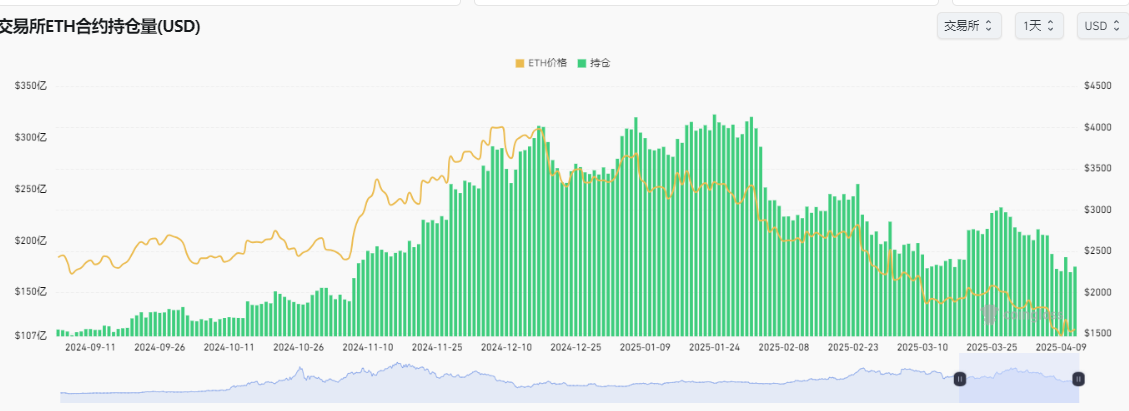
Derivatives market's short squeeze further amplified selling pressure. As of April 11, despite continuous price decline over the past month, ETH open interest (OI) has not decreased but instead surged to $17.5 billion.
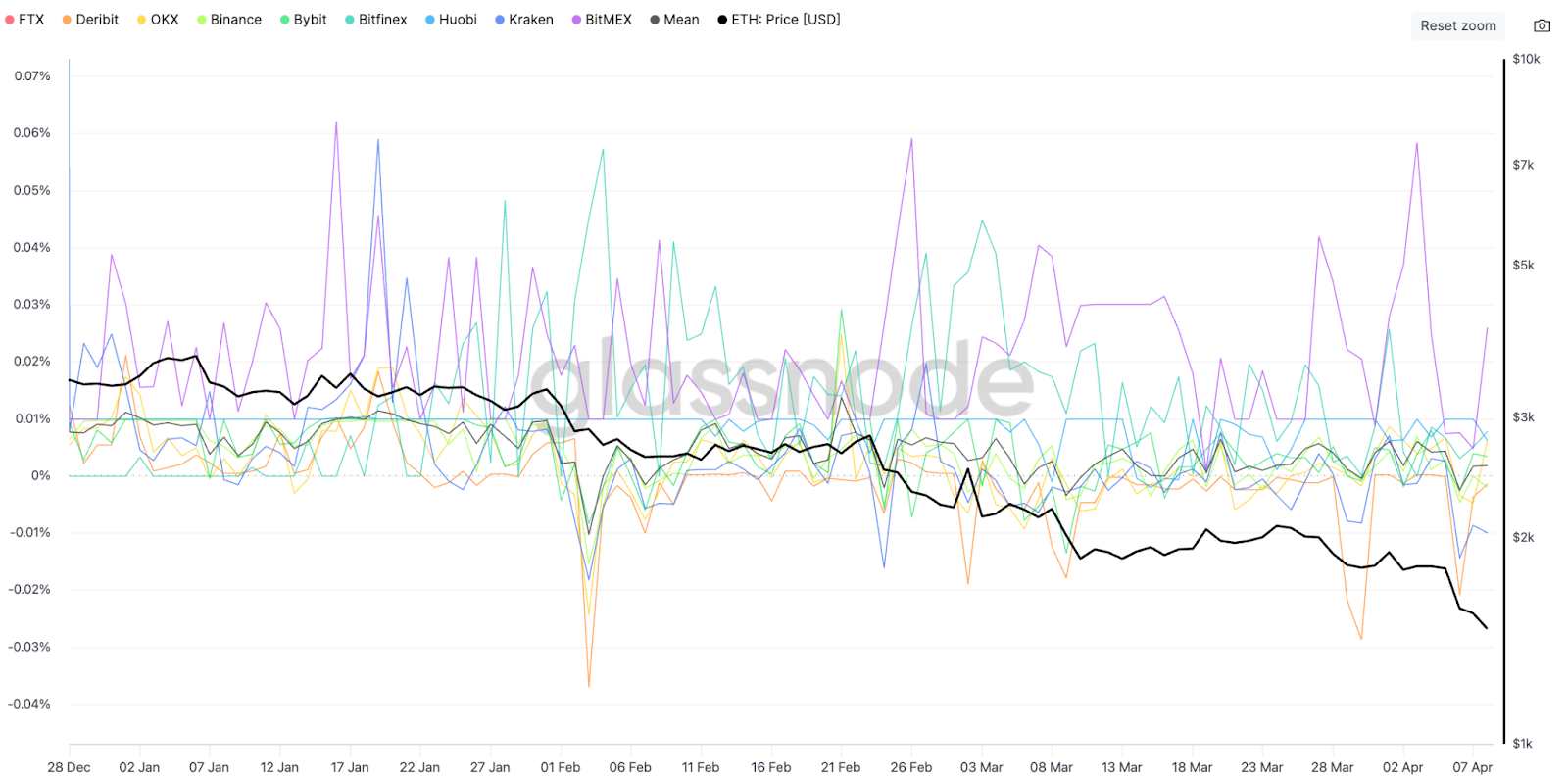
Perpetual contract funding rates remain consistently negative, indicating the market has entered an "extremely bearish" state. Multiple Ethereum whales have sold spot holdings at low costs and added positions to short through the derivatives market. For instance, an ancient address sold 6,000 ETH at a $0.31 cost, with over a thousand-fold profit, completely shattering market confidence.
III. Ecosystem Surrender: Layer1 Competition and Layer2 Diversion
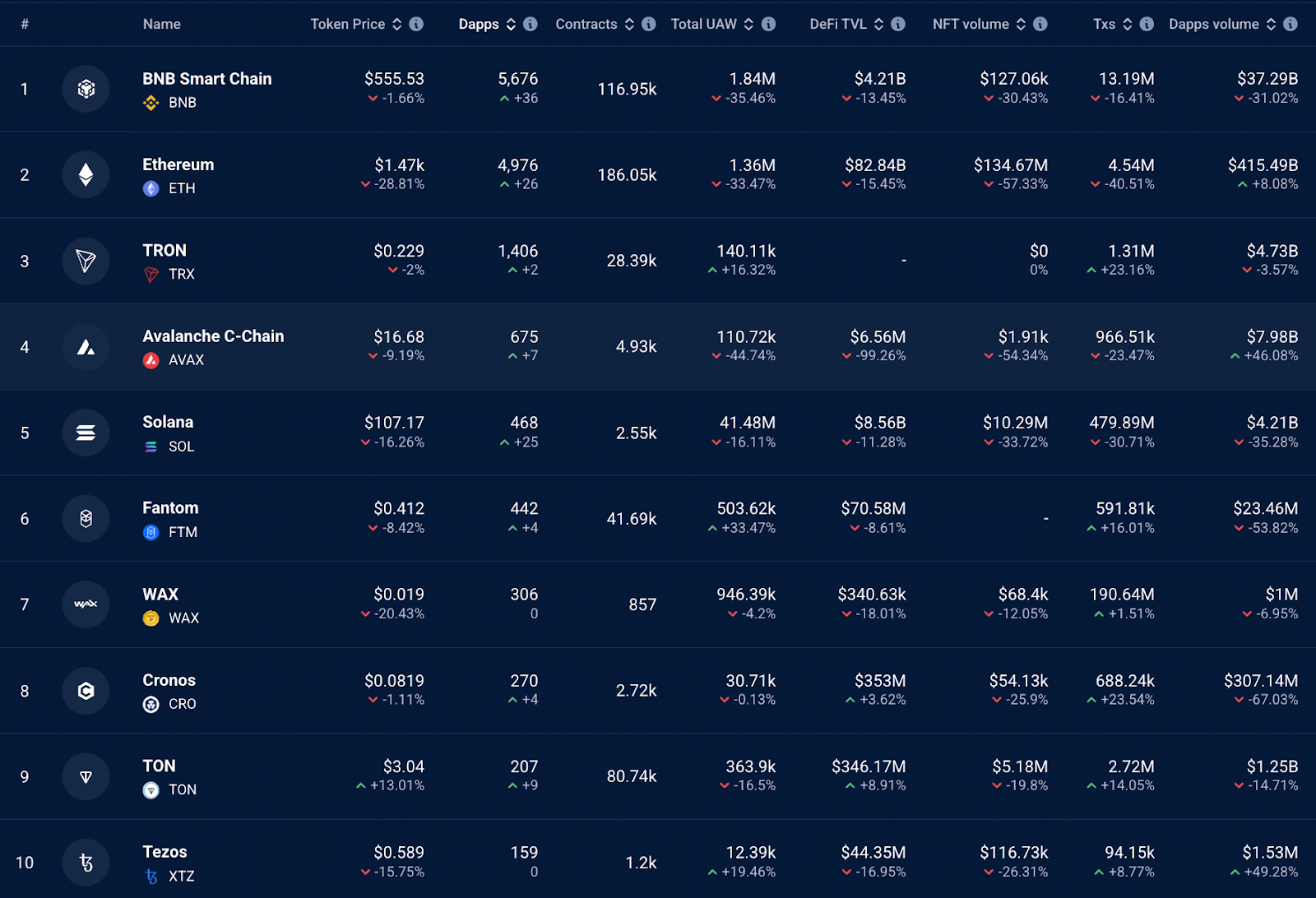
Blockchain 24-hour DApp Transaction Volume Ranking (USD)
Ethereum's ecosystem moat is being dismantled from two directions: Layer1 competitors are eating market share, while Layer2 scaling solutions dilute mainnet value. This "inside-outside pincer attack" has reduced ETH from "ecosystem fuel" to a "silent asset".
(1) Layer1 Rise: Solana's "Fatal Alternative"
Solana has become Ethereum's biggest threat with high TPS (50,000+) and low gas fees ($0.0002):
- User migration: Phantom wallet daily active users exceeded 2 million, while Ethereum active addresses dropped by 477,000;
- Capital absorption: Solana's on-chain transaction volume grew 350% year-on-year in March, while Ethereum's on-chain income plummeted 90%;
- Developer exodus: Ethereum DApp development team numbers decreased by 23% quarter-on-quarter, while Solana ecosystem saw 68% new project growth.
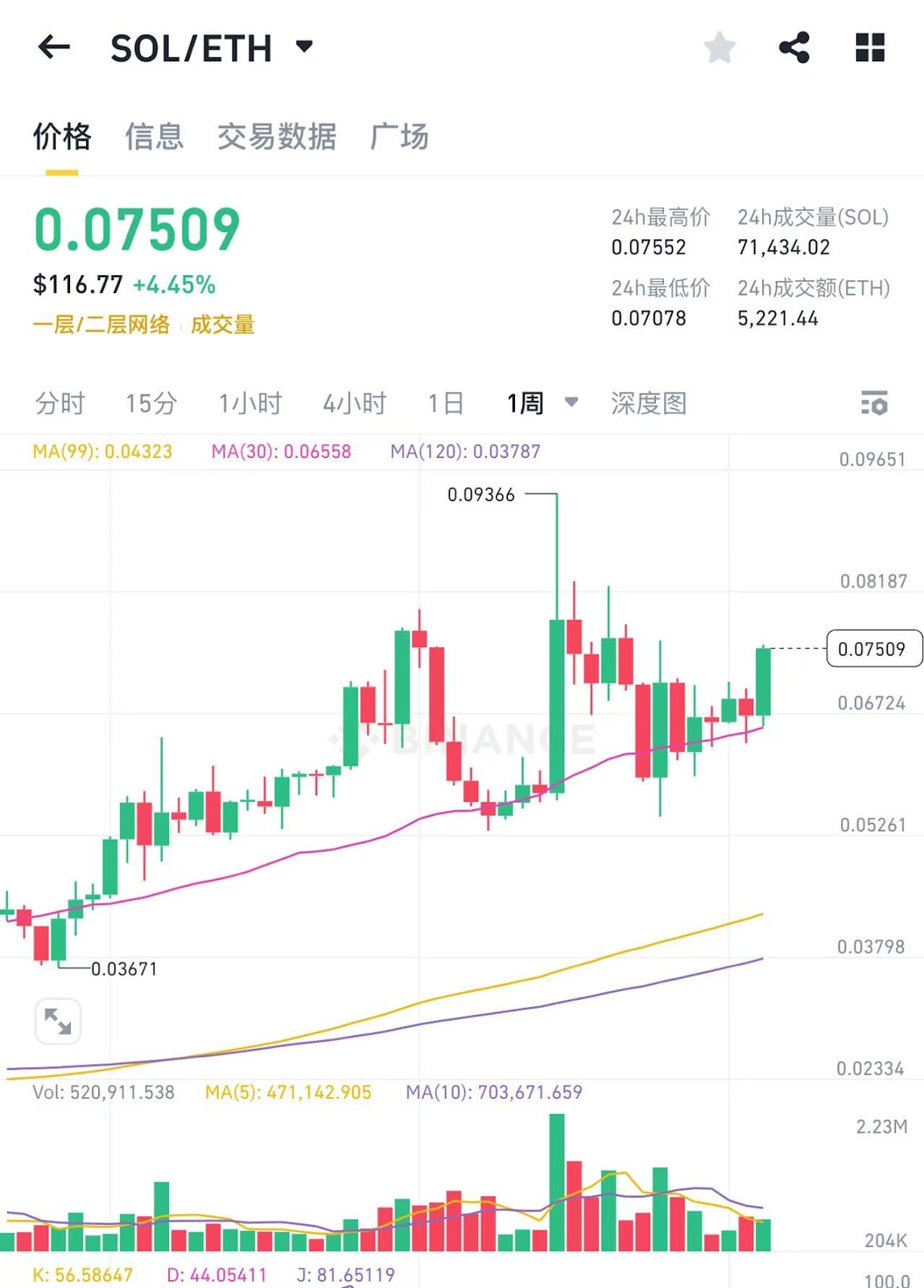
This "substitution effect" directly reflects in price: In Q1 2025, SOL/ETH exchange rate rose 120% to a high of 0.093. Even with current market downturn, SOL/ETH maintains an upward trend at 0.075, while ETH/BTC rate has dropped to a historical low of 0.019.
(2) Layer2 Predicament: Mainnet Value Being "Hollowed Out"
Ethereum's Dencun upgrade, once highly anticipated, backfired:
- Fee collapse: Layer2 transaction fees dropped 95%, but mainnet Gas fee income plummeted 99%, with annual inflation rate at only 0.76%;
- Ecosystem centrifugation: Top protocols like Uniswap v4 and Aave shifted to Layer2 platforms like Arbitrum and Optimism, causing ETH staking yield to decouple from mainnet value.
Standard Chartered Bank's latest report noted: "Layer2 expansion has caused $5 billion in Ethereum market value loss. If Pectra upgrade (EIP-7251) fails to activate in Q2, ETH might further drop to $1,000."
Conclusion: Ethereum Needs a "Paradigm Revolution"
The crash from $2,800 to $1,400 reveals Ethereum's deep-seated contradictions: technological upgrades lagging behind ecosystem demands, institutional narratives losing to regulatory realities, and moat advantages defeated by competitors. To reverse the downward trend, Ethereum needs to break through on three levels:
- Activate the staking economy: Promote ETF revenue sharing mechanisms, raising staking yields to over 5%;
- Reconstruct Layer 2 value capture: Optimize staking efficiency through EIP-7251, forcing Layer 2 to feed back mainnet income;
- Compete for RWA narrative dominance: Rebuild institutional confidence through tokenized assets (such as government bonds, gold).
The current $1,400 is both Ethereum's "darkest moment" and potentially the starting point for ecosystem rebirth.
On this, the author wants to say: "We need a more thorough paradigm revolution than Merge."
The result of this revolution will determine whether ETH becomes the "Wall Street of the blockchain world" or falls into a "Nokia" in crypto history.







